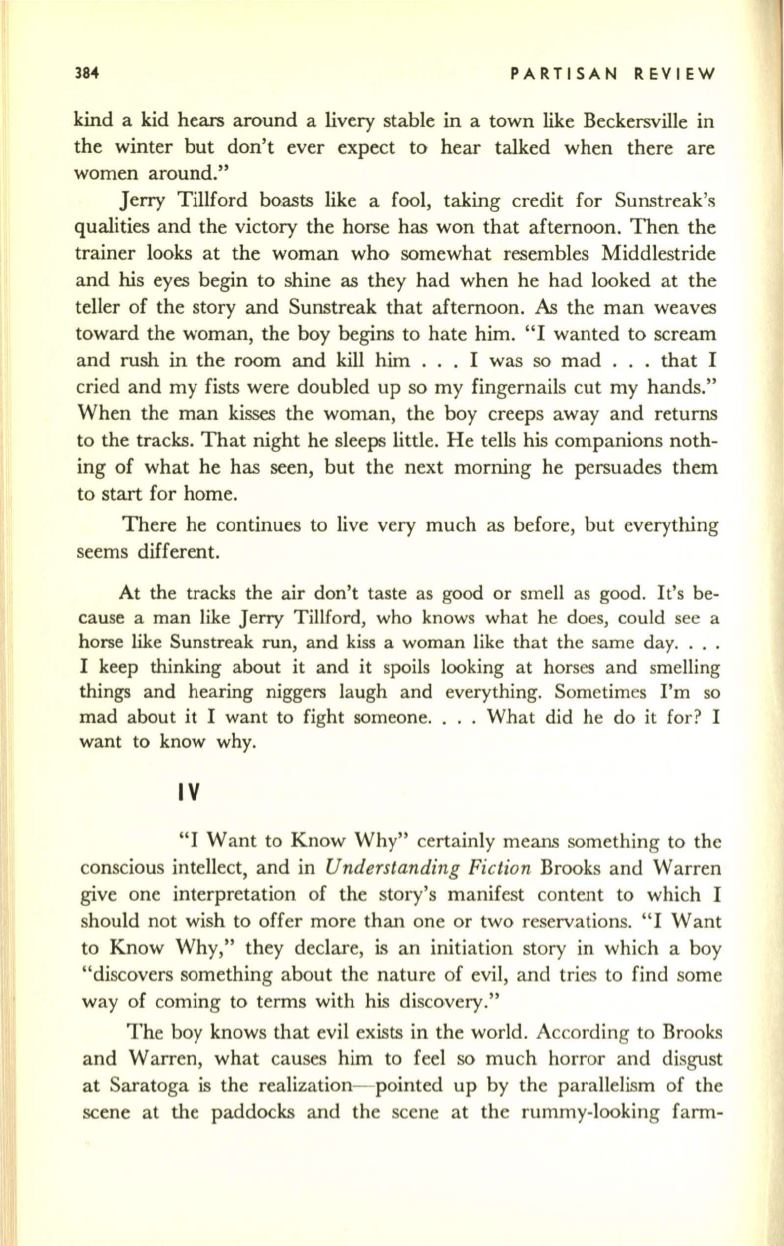
384
PARTISAN REVIEW
kind a kid hears around a livery stable in a town like Beckersville in
the winter but don't ever expect to hear talked when there are
women around."
Jerry Tillford boasts like a fool, taking credit for Sunstreak's
qualities and the victory the horse has won that afternoon. Then the
trainer looks at the woman who somewhat resembles Middlestride
and his eyes begin to shine as they had when he had looked at the
teller of the story and Sunstreak that afternoon.
As
the man weaves
toward the woman, the boy begins to hate him. "I wanted to scream
and rush in the room and kill him . . . I was so mad . . . that I
cried and my fists were doubled up so my fingernails cut my hands."
When the man kisses the woman, the boy creeps away and returns
to the tracks. That night he sleeps little. He tells his companions noth–
ing of what he has seen, but the next morning he persuades them
to start for home.
There he continues to live very much as before, but everything
seems different.
At the tracks the air don't taste as good or smell as good. It's be–
cause a man like Jerry Tillford, who knows what he does, could see a
horse like Sunstreak run, and kiss a woman like that the same day....
I keep thinking about it and it spoils looking at horses and smelling
things and hearing niggers laugh and everything. Sometimes I'm so
mad about it I want to fight someone.... What did he do it for? I
want to know why.
IV
"I Want to Know Why" certainly means something to the
conscious intellect, and in
Understanding Fiction
Brooks and Warren
give one interpretation of the story's manifest content to which I
should not wish to offer more than one or two reservations. "I Want
to Know Why," they declare, is an initiation story in which a boy
"discovers something about the nature of evil, and tries to find some
way of coming to terms with his discovery."
The boy knows that evil exists in the world. According to Brooks
and Warren, what causes him to feel so much horror and disgust
at Saratoga is the realization- pointed up by the parallelism of the
scene at the paddocks and the scene at the rummy-looking farm-


